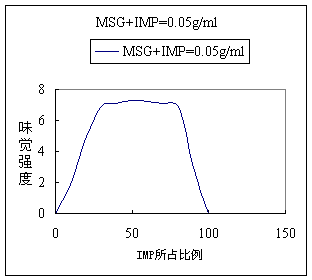The principle of yeast extract
1, Maillard reaction
The Maillard reaction is a natural reaction of amino acids, peptides, proteins and sugars in foods during processing and storage, and plays an important role in the formation and improvement of food color and flavor.
The extract of yeast extract (yeastextract: YE) is rich in amino acids, peptides and proteins. Therefore, under certain conditions, especially at high temperatures, the Maillard reaction is more intense and a large amount of flavor substances are produced. Therefore, proper heating when using YE
The treatment will help it maximize its flavor enhancement and ultimately improve product quality.
2, umami multiplication effect
The umami taste is a complex and comprehensive taste, which is a comprehensive induction of the umami ingredients in the food by human receptors on the tongue. When different types of umami ingredients are present at the same time, synergistic action occurs to multiply the umami sensation by acting on different receptors. The so-called multiplication means when two or more seasonings are together. It is stronger than the individual seasonings when used alone.
YE contains a variety of taste amino acids, peptides, small molecular proteins and rich taste nucleotides. It can effectively simulate the complex flavor of natural foods (especially meat) in a small amount, and make the flavor characteristics of the products more complete.
(1) The effect of umami multiplication and the effect of umami on food flavor

The principle of the taste of yeast extract
The above figure shows the umami intensity curve obtained by changing the proportion composition of fixed MSG and IMP at a total concentration of 0.05 g/ml. As can be seen from the figure, the multiplication effect of MSG and IMP is nonlinear. When IMP accounts for about 50%, that is, when the ratio of IMP and MSG is 1..1, the umami intensity is the highest. However, in terms of comprehensive cost considerations, the ratio of IMP to MSG is better than 1..9.
(2) The effect of umami on food flavor
The addition of umami in foods can increase the overall taste intensity of the food, and can also be used to enhance some flavor characteristics of the food, such as persistence, mildness, and thickness.
The amount of savory added is not as high as possible. Studies have shown that MSG has the best flavor-increasing effect at 0.2%-0.8% of the weight of the food. When the relative 5'-IMP is about 0.02-0.04%, the equivalent flavor intensity can be obtained. But it is also time to consider the ratio of umami to NaCl. If MSG and salt are added to chicken soup or spiced chicken soup, the optimum ratio is 0.33% MSG, 0.83% NaCl and 0.38% MSG, 0.87% NaCl. Only in a certain concentration range, it is pleasant. Feeling, too much is counterproductive.
3, cover up the odor, light salt effect
(1) In the range of 0.6% - 4.0% NaCL content, when the added YE content is between 0.4% and 3.0%, the salty mouthfeel of the solution can be enhanced.
(2) When the concentration of NaCL is >7%, the addition of 0.4% or more of YE can weaken the salty taste of the product to varying degrees, and the degree of weakening increases with the increase of NaCL concentration and YE addition.
YE performance characteristics
(1) pure natural, rich in a variety of amino acids, peptides, taste nucleotides
Its amino acid composition is shown in the table below.
| Measurement value mg/100g | Test items | Measured value mg/lOOg | |
| Aspartic acid | 3028.4 | Isoleucine | 1527.5 |
| Threonine | 1210.1 | Leucine | 2455.1 |
| Serine | 1266.3 | Tyrosine | 593.8 |
| Glutamate | 8246.8 | Phenylalanine | 1142.0 |
| Glycine | 1591.2 | Lysine | 2120.5 |
| Alanine | 1006.5 | Histidine | 567.0 |
| Cystine | 47.2 | Arginine | 1887.7 |
| Proline | 1714.6 | Proline | 2191.5 |
| Methionine | 364.0 | Tryptophan | ------ |
| Amino acid sum | 31415.5 | ||
(2) The taste is delicious, the aroma is strong, and the meat is strong and mellow.
(3) High temperature resistance, which can give food a better flavor under high temperature conditions